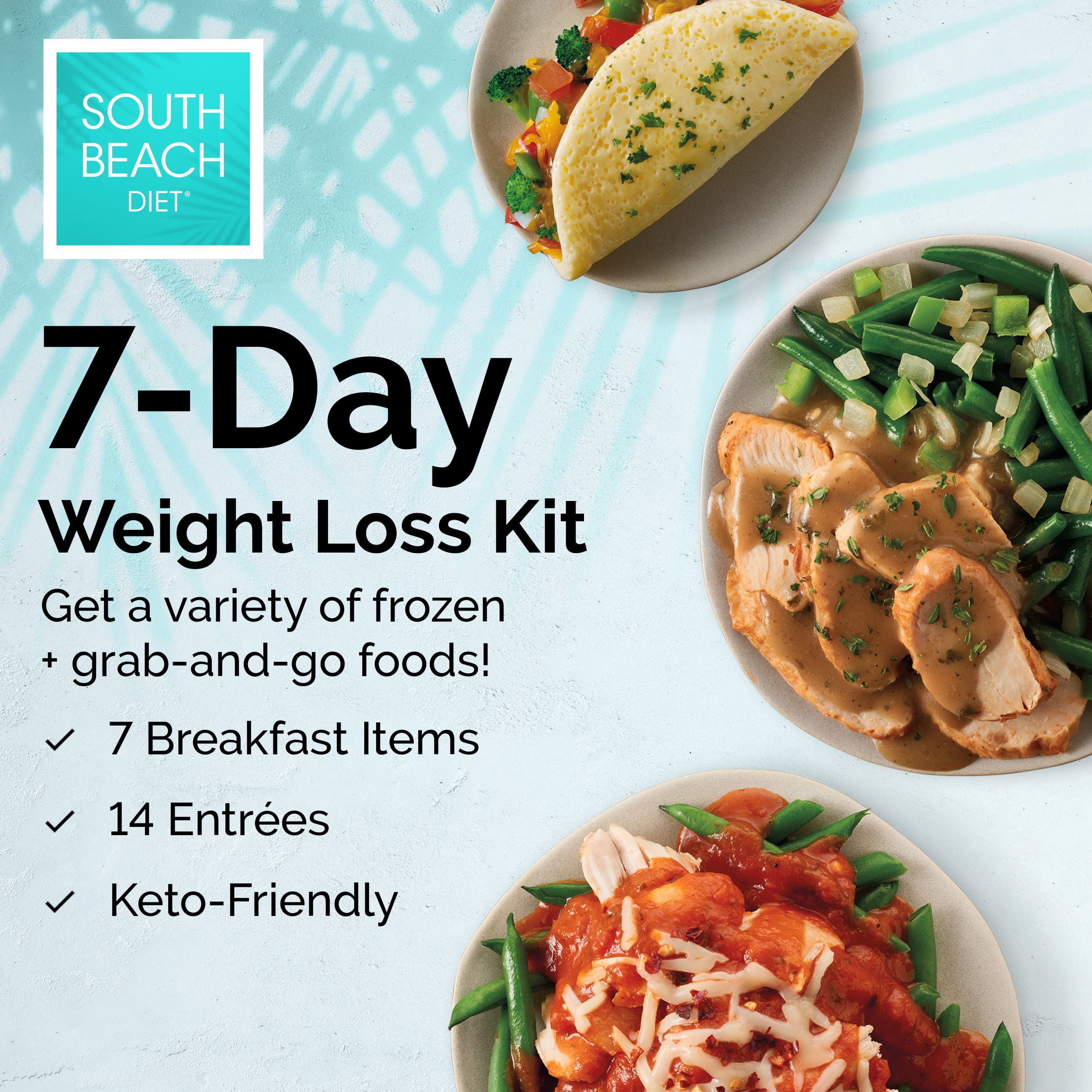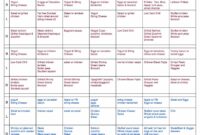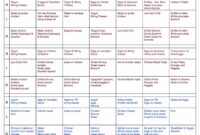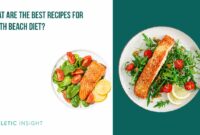South Beach Diet Overview: This guide delves into the popular South Beach Diet, exploring its core principles, three-phase structure, and comparison to other weight-loss methods. We’ll examine the permitted and restricted foods in each phase, providing sample meal plans and grocery lists to aid your understanding. The potential health benefits and risks will be thoroughly discussed, alongside practical strategies for long-term success and sustainability.
We’ll cover everything from macronutrient ratios and visual representations of the diet to addressing common concerns and misconceptions. Whether you’re considering starting the South Beach Diet or simply curious about its effectiveness, this overview aims to provide a comprehensive and informative resource.
Diet Principles
The South Beach Diet is a low-carbohydrate, high-protein diet that emphasizes the consumption of healthy fats and complex carbohydrates. Unlike some restrictive diets, it focuses on making sustainable lifestyle changes rather than rapid weight loss through severe calorie restriction. The core principle is to control blood sugar levels by limiting simple carbohydrates and refined sugars, promoting satiety and reducing cravings. This approach aims to improve metabolic health alongside weight management.
Three Phases of the South Beach Diet
The South Beach Diet is structured around three phases, each with specific dietary guidelines designed to facilitate weight loss and long-term maintenance. The progression through these phases is crucial for achieving lasting results.
Phase 1 (Weeks 1-2): This initial phase is the most restrictive, focusing on eliminating unhealthy fats and simple carbohydrates. Permitted foods include lean proteins (fish, poultry, beans), healthy fats (avocado, nuts, olive oil), and non-starchy vegetables. Restricted foods include sugary drinks, processed foods, white bread, pasta, and most fruits. The goal is rapid initial weight loss by stabilizing blood sugar and reducing insulin resistance.
Phase 2 (Weeks 3-onwards): Once weight loss plateaus in Phase 1, Phase 2 introduces more carbohydrates, gradually incorporating healthy options like whole grains, fruits (in moderation), and some legumes. The emphasis remains on lean proteins and healthy fats. This phase focuses on maintaining weight loss while gradually expanding dietary choices to promote long-term adherence.
Phase 3 (Maintenance): This is the lifelong maintenance phase. It allows for a more flexible approach, incorporating a wider variety of foods while maintaining a focus on healthy choices and portion control. The principles learned in the previous phases are applied to maintain a healthy weight and lifestyle.
Comparison with Other Weight-Loss Plans
The South Beach Diet distinguishes itself from other popular diets through its emphasis on specific carbohydrate types. Unlike the Ketogenic diet, which severely restricts carbohydrates to induce ketosis, the South Beach Diet allows for some carbohydrate intake, particularly complex carbohydrates in later phases. This makes it potentially easier to adhere to in the long term. Compared to the Mediterranean Diet, the South Beach Diet places a greater emphasis on controlling carbohydrate intake, while the Mediterranean diet focuses on the overall quality and balance of macronutrients, including a higher proportion of fruits and vegetables.
Macronutrient Ratios Across Phases
The macronutrient ratios shift across the three phases of the South Beach Diet to support the different goals of each stage.
| Phase | Protein (%) | Carbohydrates (%) | Fat (%) |
|---|---|---|---|
| Phase 1 | 40-45 | 20-25 | 35-40 |
| Phase 2 | 35-40 | 35-40 | 25-30 |
| Phase 3 | 30-35 | 40-45 | 25-30 |
Food Lists & Meal Planning
Successfully navigating the South Beach Diet requires careful planning and adherence to the prescribed food lists. Understanding the permitted foods in each phase is crucial for weight loss and overall health improvement. This section provides example meal plans, grocery lists, suitable recipes, and healthy snack options to guide you through each phase of the diet.
Phase 1 Meal Plan Example
Phase 1 focuses on eliminating sugars and unhealthy fats to jumpstart weight loss. A typical day might include a breakfast of scrambled eggs with spinach and a small portion of avocado, a lunch of grilled chicken salad with mixed greens and a vinaigrette dressing, and a dinner of baked salmon with steamed asparagus and a small portion of quinoa. Snacks could include a handful of almonds or a small piece of fruit like a berry. This phase is strictly about resetting your body’s metabolism and reducing inflammation.
Phase 2 Meal Plan Example
Once you’ve completed Phase 1, Phase 2 introduces more food variety. A sample day could include oatmeal with berries for breakfast, a turkey and avocado sandwich on whole-wheat bread for lunch, and a lean beef stir-fry with brown rice for dinner. Healthy fats, such as those found in avocados and nuts, are incorporated more freely in this phase.
Phase 3 Meal Plan Example
Phase 3 focuses on long-term maintenance. This phase allows for a wider range of foods, including some healthy carbohydrates and lean proteins. A sample day could consist of whole-wheat toast with avocado and eggs for breakfast, a lentil soup with a side salad for lunch, and chicken breast with roasted sweet potatoes and green beans for dinner. Portion control remains important.
Sample Grocery List for Beginners
Before embarking on the South Beach Diet, stocking your pantry and refrigerator with the right ingredients is essential. Here’s a sample grocery list for someone starting the diet:
- Lean proteins: Chicken breast, fish (salmon, tuna), lean ground beef, turkey
- Vegetables: Spinach, broccoli, asparagus, green beans, bell peppers, onions, mushrooms
- Fruits (in moderation): Berries, avocado
- Healthy fats: Olive oil, avocado oil, nuts (almonds, walnuts), seeds (chia, flax)
- Whole grains: Quinoa, brown rice, whole-wheat bread (in moderation, primarily in later phases)
- Other: Eggs, low-fat dairy (Greek yogurt, cheese – in moderation), herbs, spices
Suitable Recipes and Cooking Methods
The South Beach Diet emphasizes simple, healthy cooking methods. Grilling, baking, steaming, and stir-frying are all excellent choices. Recipes should focus on fresh, unprocessed ingredients. For example, a simple grilled chicken breast with roasted vegetables requires minimal preparation and cooking time. Similarly, a quick stir-fry with lean protein and plenty of vegetables is both nutritious and satisfying.
Healthy Snacks Allowed During Each Phase
The availability of healthy snacks varies across the phases, with more options becoming available as the diet progresses.
Phase 1 Healthy Snacks
- A small handful of almonds or walnuts
- A small piece of fruit (berries are preferred)
- A hard-boiled egg
Phase 2 Healthy Snacks
- A small bowl of Greek yogurt with berries
- A small portion of cottage cheese
- A piece of fruit (a wider variety allowed)
- Celery sticks with peanut butter (in moderation)
Phase 3 Healthy Snacks
- A small portion of whole-wheat crackers with cheese
- Air-popped popcorn (lightly salted)
- A small serving of trail mix (nuts, seeds, dried fruit – in moderation)
Practical Considerations & Sustainability
The South Beach Diet, while effective for initial weight loss, requires a long-term commitment for sustained results. Understanding the practical aspects, including cost, social adjustments, and the transition between phases, is crucial for successful and lasting weight management. This section will address these key considerations to help you navigate the diet effectively and maintain your progress.
Long-Term Maintenance and Preventing Weight Regain
Maintaining weight loss after completing the South Beach Diet’s phases requires a shift towards a sustainable lifestyle. This isn’t about returning to old habits; rather, it’s about integrating the healthy principles learned into your daily routine. A crucial element is mindful eating—paying attention to hunger and fullness cues, avoiding emotional eating, and choosing nutrient-dense foods. Regular physical activity, even moderate exercise like brisk walking for 30 minutes most days, is also essential. Furthermore, monitoring your weight and adjusting your food intake accordingly can prevent gradual weight creep. Regular check-ins with a healthcare professional or registered dietitian can provide valuable guidance and support.
Cost-Effectiveness of the South Beach Diet
Compared to other weight loss methods, the South Beach Diet can be considered relatively cost-effective. While initial investment in specific South Beach Diet branded products might seem expensive, the long-term cost can be lower than other programs involving expensive supplements, meal replacements, or professional coaching sessions. The diet primarily focuses on whole, unprocessed foods, many of which are readily available and affordable at most grocery stores. The focus on lean protein and healthy fats, while potentially more expensive per unit than highly processed carbohydrates, often leads to reduced overall food consumption due to increased satiety, potentially offsetting the higher cost per item.
Social and Lifestyle Adjustments
The South Beach Diet requires some social and lifestyle adjustments. Eating out can be challenging, but planning ahead and choosing restaurants with healthy options can mitigate this. Bringing your own food to social gatherings or choosing smaller portions of healthier dishes can help you stay on track. Educating family and friends about your dietary changes can foster support and understanding. Learning to prepare healthy meals and snacks at home allows for better control over ingredients and portion sizes, making it easier to stick to the plan.
Transitioning Between Phases
Successfully transitioning between the different phases of the South Beach Diet is key to long-term success. The transition should be gradual, avoiding abrupt changes that might lead to cravings or setbacks. For instance, when moving from Phase 1 to Phase 2, gradually reintroduce permitted carbohydrates, paying close attention to how your body responds. If you experience weight gain or increased cravings, slow down the reintroduction process. Each phase builds upon the previous one, providing a structured approach to incorporating more food choices while maintaining healthy eating habits. Listening to your body’s signals and making adjustments as needed are crucial during this process.
Epilogue
Ultimately, the South Beach Diet offers a structured approach to weight loss that emphasizes healthy eating habits and sustainable lifestyle changes. While individual results may vary, understanding the diet’s principles, phases, and potential benefits and risks is crucial for making an informed decision. Remember to consult with a healthcare professional before making significant dietary changes.




